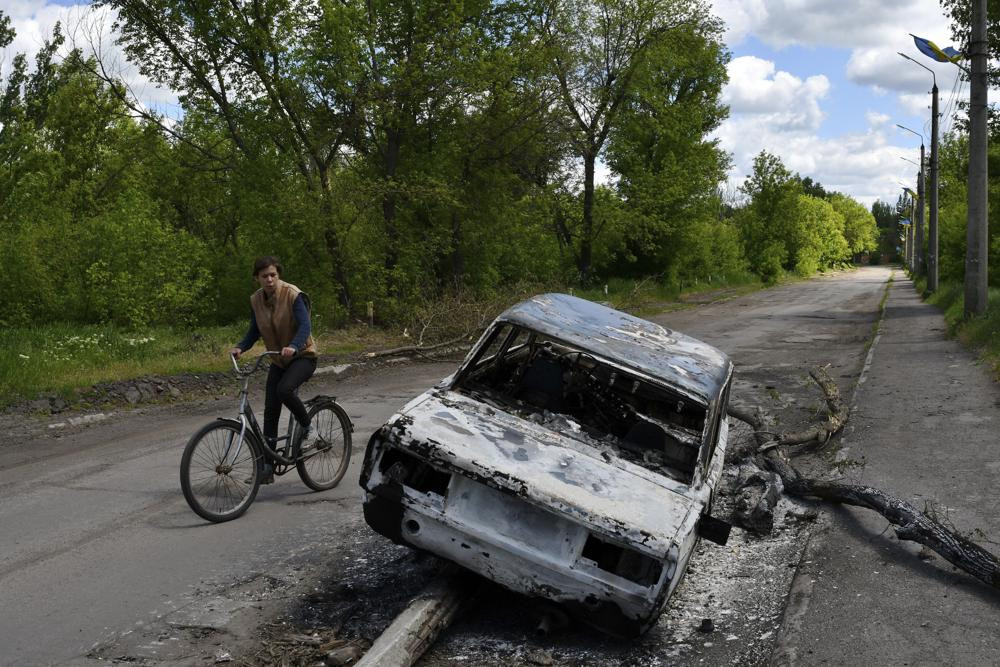Hundreds of Ukrainian fighters defending the last holdout in Mariupol were evacuated to areas controlled by Russian-backed separatists and officials worked Tuesday to get the rest out, signaling the beginning of the end of a siege that became a symbol of Ukrainian resistance.
Russia called the operation a mass surrender. The Ukrainians avoided using that word — but said the garrison had completed its mission.
More than 260 fighters — some severely wounded — were pulled from a steel plant on Monday that is the last redoubt of Ukrainian fighters in the city and transported to two towns controlled by separatists, officials on both sides said. Other fighters — their precise numbers unknown — remain inside the Azovstal steelworks that sprawl over 11 square kilometers (4 square miles) in a city otherwise controlled by Russian forces.
The complete capture of the plant would mark a significant milestone. It would give Russia its biggest victory of the war yet and could help free up forces for offensive action elsewhere in the industrial heartland of eastern Ukraine that is now Russia’s focus after a series of setbacks.
“Ukraine needs Ukrainian heroes to be alive. It’s our principle,” Ukrainian President Volodymyr Zelenskyy said in announcing that the evacuation had begun from the relentlessly bombarded mill and its warren of tunnels and bunkers.
“There are heavily wounded among them. They are receiving medical help,” he said. “The work continues to bring the guys home and it requires delicacy and time.”
Ukraine Deputy Defense Minister Hanna Maliar said 264 fighters were evacuated from the plant, including 53 “heavily wounded” brought to a medical facility. Russian Defense Ministry spokesman Igor Konashenkov gave slightly different numbers: 265 evacuees, 51 of them seriously wounded. The discrepancy couldn’t immediately be explained.
After nightfall Monday, several buses pulled away from the steel mill accompanied by Russian military vehicles. Russian Defense Ministry video of some evacuees did not show any that were armed. The video shows troops patting down and searching the fighters. Some were on stretchers as they were loaded onto the buses.
Oleksandr Danylyuk, a Ukrainian former national security chief and finance minister, told the BBC that because Ukrainian forces were unable to liberate the plant, the negotiated evacuation to Russian-controlled territory had been “the only hope” for Azovstal’s defenders.
Those remaining in the plant are still “able to defend it. But I think it’s important to understand that their main mission is completed and now their lives need to be saved,” he said.
A full negotiated withdrawal could save lives on the Russian side, too, sparing Russian-backed troops from what almost certainly would be a bloody and difficult battle to wrest the labyrinth-like plant from Ukrainian control.
Danylyuk added that those evacuated should be swapped for Russian prisoners — but Vyacheslav Volodin, speaker of the lower house of the Russian parliament, said that there are “war criminals” among the plant defenders and they should not be exchanged but tried.
Maliar heaped praise on the fighters who survived in the plant for nearly three months and said it been impossible to liberate them “by military means.”
“Thanks to the defenders of Mariupol, we have gained critically important time to form reserves, to regroup forces and to receive aid from our partners,” she said. “Mariupol’s defenders have fully accomplished all missions assigned by the commanders.”
Russia has been plagued by setbacks in the war, most glaringly in its failure early on to take the capital of Kyiv. Much of the fighting has shifted to the Donbas region in the east but also has turned into a slog, with fighting village-by-village.
Strikes have also occasionally rocked other areas of the country. The western city of Lviv was rocked by loud explosions early Tuesday. Witnesses counted at least eight blasts accompanied by distant booms. The sky west of the city, which was under an overnight curfew, was lit up by an orange glow.
Howitzers from the U.S. and other countries have helped Kyiv hold off or gain ground against Russia, a senior U.S. defense official said. The official, who spoke on condition of anonymity to discuss the U.S. military assessment, said Ukraine has pushed Russian forces in the east to within 1 to 4 kilometers (a half-mile to 2.5 miles) of Russia’s border but could not confirm if it was all the way to the frontier.
In another setback for Moscow, Sweden’s decided to seek NATO membership following a similar decision by neighboring Finland. That is a historic shift for the countries, which have been nonaligned for generations.
On Tuesday, Swedish Foreign Minister Ann Linde signed the formal request to join the alliance, which will now be sent to NATO Secretary-General Jens Stoltenberg.
Stoltenberg has said the membership process for both could be quick — but President Recep Tayyip Erdogan of Turkey, a NATO member, has cast doubt on the process. He has objected to allowing Sweden and Finland to join NATO, saying they failed to take a “clear” stance against Kurdish militants and other groups that Ankara considers terrorists, and imposed military sanctions on Turkey.
All 30 current NATO members must agree to let the Nordic neighbors join.
Russian President Vladimir Putin said Moscow “does not have a problem” with Sweden or Finland as they apply for NATO membership, but that “the expansion of military infrastructure onto this territory will of course give rise to our reaction in response.”
Putin launched the invasion on Feb. 24 in what he said was an effort to check NATO’s expansion but has seen that strategy backfire.

